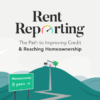The key phrase here is should you
When it comes to buying your first home, the upfront costs can seem insurmountable. Down payments, inspections, escrow funds – it’s only natural to look over at a retirement account and ask whether or not you can access that cash. At Digs, we know that in some cases you CAN pull from retirement accounts, but that doesn’t necessarily mean you SHOULD.
Figure out what type of account you have

The first step in assessing your options is understanding what type of account you have. If you’re not sure what vehicle your money is in, start by asking your HR or Benefits Director for help. We’ll walk through each category below, but it will be helpful to know what you have as you consider your options.
401k Withdrawal
A 401k account is a great retirement option, especially when your company offers a match. A match simply means that for every dollar you put in, your company will match it – usually up to a certain percentage. Depending on how much is in your 401k, pulling from it could help you with a down payment and other costs. But that transaction won’t come without a price.
Watch out for penalties
The first thing you should know about a 401k withdrawal is that the money you pull out will be subject to penalties, assuming you’re not yet retirement age. The money you have saved in your 401k was put in with pre-tax dollars with the intention of using it for retirement. When it’s pulled out early, it’s subject to the taxes you didn’t pay up front, plus a ten percent penalty. That means if you’re in a 20% tax bracket and withdraw $25,000, you’ll actually only pocket $17,500 after the taxes and penalty. For that reason, using your 401k for a down payment can feel like getting money at a 30% interest rate.
You’ll have to apply for a hardship exemption
Additionally, there isn’t a clause for buying your first home with a 401k which means you’ll have to apply to use the money under what’s called a hardship exemption. Be sure to work with your HR or Benefits Director for all the details if you plan to use a 401k that you have with your current company.
401k Loan
An alternative to the 401k withdrawal is the 401k loan. You won’t be facing withdrawal penalties, but as you might imagine, there are things to consider here too. You’re only allowed to take out up to $50,000 or half of the vested amount in your account – whichever is less. You’ll definitely need to work with your HR or Benefits Director if you plan to use a 401k that you have with your current company because not all companies allow loans. Some companies may allow you to take a loan but have an approval process you’ll need to follow.
Quick access, but quick repayment required
One good thing about a 401k loan is that you’ll get your money fairly quickly. However, you’ll also have to pay it back quickly – typically in under five years. The repayments will be a predetermined amount and you aren’t allowed to miss any or make additional payments (unless paying it off in full). You’ll also be paying yourself interest, which is there to help you make up the interest you missed by pulling your money out prematurely.
Don’t leave your company before paying back the loan
One critical note with a 401k loan is that if for any reason you leave your company – whether you find a better job or get fired – your loan will be due in full right away. If you’re not able to pay it back in full and miss the deadline of 60 days, the amount you withdrew will be subject to taxes and a ten percent penalty. In our experience, if you don’t have the money to repay the loan right away, you probably don’t have 30-40% to pay taxes and penalties, which means you can end up on the wrong side of the IRS quickly.
Lastly, you may have already guessed it but you’ll be sacrificing growth in your account by unplugging the money you have already saved. For all these reasons, we don’t recommend pulling money from your 401k – via a loan or withdrawal.
Traditional IRA
Maybe you have a traditional IRA and have heard the rules are different than a 401k. That’s true, but there are still some things you want to be aware of. First of all, there’s a limit to what you can pull out and when it comes to a home purchase, it may not seem like enough. As a first-time homebuyer, you are eligible to withdraw $10,000 without a penalty from your traditional IRA. However, you will not avoid taxes and that $10,000 could quickly become $8,000 or less depending on your tax bracket.
You’ll lose gains
Secondly, you’ll lose the growth on any funds you pull out, just like you do with a 401k withdrawal. That’s bad news when you understand that compound interest has been called the eighth wonder of the world (don’t ask us to name the first seven!). The earlier you start and longer the money sits untouched, the better position you’ll be in when it comes to retirement!
Roth IRA
There are some significant differences in using your Roth IRA for a down payment, mainly because you contributed dollars to this account with after-tax money. The withdrawal won’t be taxed because you’ve already paid taxes before you put the money into your investment. This a big difference between all the other options we’ve discussed.
When deciding how much you may want to pull from a Roth IRA, here’s what you should keep in mind – you can withdraw your contributions at any time, in full, without a penalty. If you’ve put $25,000 into your account, you can pull $25,000 out – as simple as that. If you’ve had some major growth AND owned your account for five or more years, great! You can pull an additional amount out without penalty, up to $10,000 for your first home. That’s an individual limit so if you’re married and your spouse has had their own Roth IRA for five or more years, they could also take $10,000 from the growth without penalty. The amount you pull from the investment earnings is typically subject to taxes so always consult an expert to ensure you know the repercussions before you make withdraws from your account.
QUICK TIP: One important note for Roth and Traditional IRA’s is that the money you withdraw towards a home purchase has to be used for that home purchase within 120 days – or be subject to penalties. That means you shouldn’t pull any money out for future planning, or even if the home purchase isn’t a sure thing.
Pros and cons of pulling from retirement

Before you make any decision, you should fully understand the pros and cons of using retirement funds towards your first home.
Pros of using retirement funds for a home
- You may be able to access retirement fund money more quickly than you can save up for a down payment or other initial home buying costs.
- With a larger down payment, you may be able to avoid costs like PMI.
- You’re not losing the money but rather moving it from one long term investment to a home, which often appreciates in value as well.
- If you borrow from your 401k, you’ll be paying the loan back with interest that goes into your account. This helps offset the loss of removing the funds from your account temporarily.
Cons of using retirement funds for a home
- One of the best benefits of your retirement account is compound interest, the money your money is making by sitting in your account. When you withdraw any amount from your retirement, you’re essentially stealing that growth from your future self.
- It’s not a dollar for dollar payback – since you’re losing the growth factor, it can be much harder to make up the value.
- With a 401k loan, you may hurt your borrowing potential because you’re essentially adding another payment. When a lender looks at your situation and overall risk factors, this new payment will be a part of their assessment.
- It’s very easy to end up paying penalties or putting yourself is a bad financial position – for example, losing your job when you have a 401k loan means the loan is due in full. Missing the 120-day deadline to close on a house when you are using money from an IRA means you could be subject to penalties.
If you decide to pursue one of the options we’ve discussed here, the best place to start is with your HR or Benefits Director and a financial planner or tax advisor. Be sure you’ve looked at all the factors specific to your situation before you make any decisions!
Alternatively, at Digs, we want you to get into your first home without stalling your long-term retirement investments. We recommend taking a look at first-time home buyer programs that may make your dream of becoming a home-owner a reality much faster than you think.
There are a lot of ways that you can get into a home with bad credit or a low down payment and often times even receive assistance. Check out all the options here.
Ask for help!
If you’re unsure, don’t be afraid to ask for help. When you’re getting into homeownership, it’s best to work with a team that knows what works and has your best interests at heart. A financial planner and tax advisor can help you with your personal finances and a realtor and mortgage broker often have the best information on home buying options. We like to make sure you have the knowledge to make the best choices for your situation so be sure to read through the resources we offer here or reach out!
Be patient
In the meantime, be patient and take your next step. The best case scenario when it comes to buying a home is having the money to give you options. We recommend getting on a savings plan as early as possible. In fact, we believe in it so much, we created one just for first time home buyers – with the technology you need to track it – and the partners you need to get the best return possible.
For more information on our savings programs, click here. Just because you’re not ready to make a decision on using retirement investments doesn’t mean you can’t start making progress towards your first home today. Let’s get started together!







